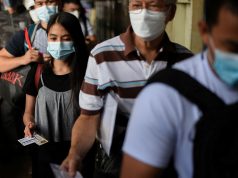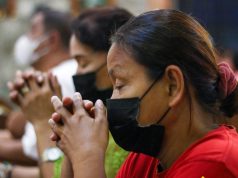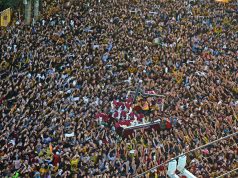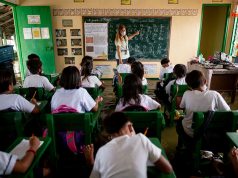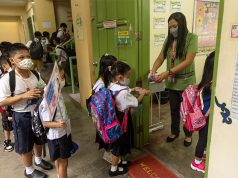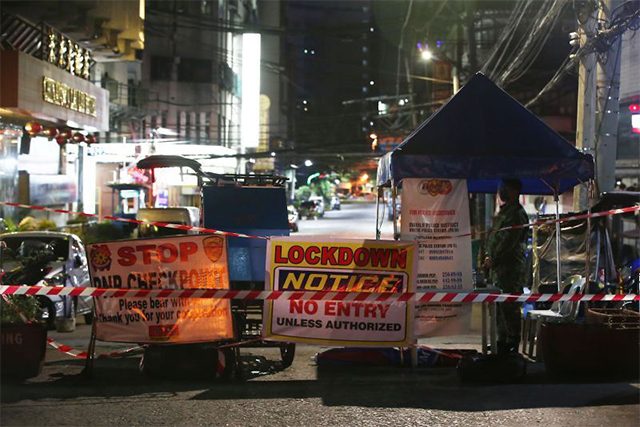
(Updated 9:07 p.m.) After the government placed Metro Manila and four nearby provinces under a stricter general community quarantine through Inter-Agency Task Force for the Management of Emerging Infectious Diseases‘ Resolution No. 104, online Filipinos raised confusion and concerns over perceived guidelines inconsistencies.
Establishments allowed to operate
Caloocan Bishop Pablo Virgilio David took note of the prohibition against religious gatherings and compared it with the more lenient guidelines for fitness centers and personal care services, including spas.
Under the newly-established GCQ bubble, which includes NCR, Bulacan, Cavite, Laguna and Rizal, mass gatherings of all kinds are prohibited.
This includes religious gatherings, which means masses would not be held in these areas. However, weddings, baptisms and funerals can be held to a maximum of ten participants.
The GCQ bubble will take effect from March 22 to April 4, 2021.
Fitness centers and gyms within these areas are allowed to operate in a 75 percent venue capacity, “subject [to] safety protocols and minimum public health standards.”
Personal care services and spas, meanwhile, can operate at a 50 percent venue capacity.
“In spite of our adherence to strict protocol, you lock down our churches during the holiest time of the year and allow 70 percent capacity in fitness centers and 50 percent in establishments for personal care services, including spas?!!! All right. May God have mercy on your souls!” the Caloocan prelate wrote on Facebook.
David added that he was hoping the government “would at least allow a 20-30% maximum physical attendance” in their churches.
“But no, they would not even allow us to celebrate Easter on April 4. It came as an instant order and with not even a modicum of dialogue! If this is not a return to ECQ total lockdown situation, why forbid our religious gatherings? Isn’t this a violation of religious freedom?” he said in the comments section.
ECQ refers to enhanced community quarantine, the strictest of the quarantine phases with stay-at-home orders.
Some churches have foldable doors to their sides, as well as windows, which can be opened for ventilation purposes to let air flow in, a crucial means to mitigate COVID-19 transmission.
Journalist Barnaby Lo also questioned the government’s move to allow gyms a 75% venue capacity higher than outdoor and al fresco dine-in.
“Where is the science in allowing gyms 75% capacity and not allowing dine-in?” Lo tweeted.
“I’m actually not against ban on dine-in but a little consistency?” he also asked.
Writer and columnist Katrina Stuart-Santiago, on the other hand, raised the possibility that a government official owns a gym or fitness center.
“Which government official owns gyms or fitness center franchise? Or is there a China-owned one? Because that’s the only reason a space that’s a super spreader can be allowed to operate at this point,” she wrote.
Another user echoed this view.
No dine-in in restaurants, but gyms up to 75%.
No religious gatherings, but tourism encouraged within the bubble.
Wala talagang science, ano?
Pagalingan lang ng lobbyists?
— nico quejano (@nicoquejano) March 22, 2021
Some fitness centers and personal care services are enclosed and in air-conditioned settings. This increases the potential of acquiring the virus through airborne transmission.
Essential travels
Another confusion was raised over the IATF-EID’s rules on essential travels.
Non-essential travel into and out of the “GCQ bubble” or “NCR plus” is not allowed by the national government. Only authorized persons outside their residences (APOR) can visit the areas mentioned.
Elderlies, minors, pregnant women and people with co-morbidities in the GCQ bubble are also not allowed to go out of their homes.
However, those within the bubble are allowed to travel for leisure or for “staycation,” but only with their immediate families. The number of people must be limited amid the ban on mass gatherings.
“Our bubble will be in Metro Manila, Laguna, Bulacan, Cavite, and Rizal,” the Palace said.
“You can travel anywhere between Metro Manila and these provinces,” its spokesperson added.
Prior to this explanation, motorists and authorities on the ground were challenged by the implementation of the new quarantine level on Monday amid the confusion on the new rules.
On Monday noon, police personnel barred some motorists from passing the checkpoint along Batasan-San Mateo Road, which is a boundary between Quezon City and Rizal.
Both are part of the GCQ bubble, which means traveling between the areas is allowed.
Reports note that non-essential travelers were asked to go back.
Authorities eased the rules in the afternoon and no longer required IDs or proof of essential travels.
“Gulo-gulo ‘di ba? Kakasabi lang walang restriction to travel within the bubble pero itong QCPD (facepalm emoji). May GC (group chat) ba kayo?” a Twitter user said in response to the incident.
Stuart-Santiago also questioned why tourism is allowed when it is not an essential travel.
“Bawal essential travel, pero puwede mag-staycation at puwedeng mag-Tagaytay,” she tweeted.
Under the Oct. 8, 2020 guidelines of the IATF-EID, essential travel includes “business, medical, emergency, and other humanitarian reasons, and which cannot be postponed.”
Meanwhile, Trade Secretary Ramon Lopez reportedly defended the move to open commercial establishments, saying economic activity did not result in COVID-19 cases.
“If you think about it, itong restaurant na ‘to, dine in and all that, inallow natin magbukas simula, I think, August pa or September last year. At ‘yung cases hindi umakyat ng ganito. Itong nag-reopen tayo ng economic activity, hindi naman nag-lead sa COVID cases,” he was quoted as saying in a radio interview.
Lopez also attributed the surge in COVID-19 cases to “secret parties.”
“No data. But those were observations. Look around,” the trade chief was quoted as telling reporters.




